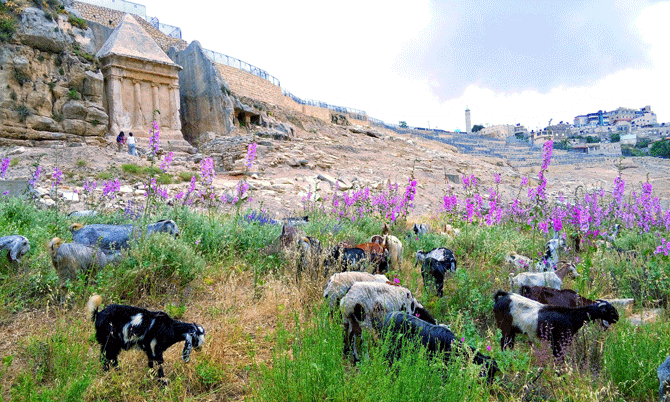Cart is empty
By Tamar Yardeni
Of all the places in the world, ancient Jerusalem is the place where you can almost tangibly feel our historical “Had Gadiya”. It starts with the Canaanites from whom David conquered Jerusalem, but then the Babylonians came and destroyed the first temple; Cyrus brought us back to Jerusalemת and we built the Second Temple, but the Greeks defiled it, and the Romans destroyed it. Then came the Muslims who defeated the Byzantines, but they were defeated by the Crusaders, who were driven out by the Ayyubids, who were conquered by the Mamluks, who were sacked by the Ottomans, who were crushed by the British and “Had Gadiya, Had Gadiya…” as goes the song.
In contrast to the Jerusalem Had Gadiya, the famous tune from Seder night is not actually that ancient. It was probably written in France only about 600 years ago, as it appears for the first time in a prayer book of the Congregation of Provence in 1406. By the way, the poem was not printed in the prayer book at all, but was added, handwritten, on the last pages. The prayer book made its way from France to Ashkenaz, and ended its “life” in the Geniza (place where old texts bearing the name of the Almighty are sent for special burial) of Prague. 200 years later, in 1590, someone found it and flipped through it, and was so enthusiastic about the poem that he copied it into the Passover Haggadah. This was the first time that “Had Gadiya” appeared in the Haggadah, and from there it spread throughout the Diaspora of Israel.
But what is the connection between “Had Gadiya” and Seder night?
Some say that everything has to do with the goat that father bought for the price of two zuz for the Passover sacrificial offering. Another interpretation compares the goat to Joseph, the cat to his brothers and the dog to the Egyptians who enslaved Israel. The stick represents Moses’ staff, the fire is the evil desire of those who complain in the desert, the water is the Torah (likened to water), the bull is the sin of the calf, the slaughterer is Moses, The Angel of Death is the Angel of Death, and God is… God. The most “Jerusalem” interpretation is the one that sees the verse as a parable for the historical process we described above: the father who bought the goat is God who chose the people of Israel; the nations of the world “prey upon” the chosen people and hurt each other to take their place, but God finally restores the people of Israel to greatness.
We end with the fascinating connection between ancient Jerusalem and “Had Gadiya”, created by Yehuda Amichai in his poem “An Arab Shepherd Looking for a Goat on Mount Zion”. In this poem, the poet describes the plight of a shepherd looking for a lost goat, and of a Jewish father searching for his son who has disappeared among the trees in Jerusalem:
…
Our two voices meet above
The Sultan’s pool in the valley in the middle.
Neither of us wants
The child and the goat to enter
The terrible process of Had Gadiya.
After that we found them in the bushes,
And our voices came back to us and cried, and laughed to ourselves.
The search for a goat or a child
Has always been
The beginning of a new religion in these mountains.



